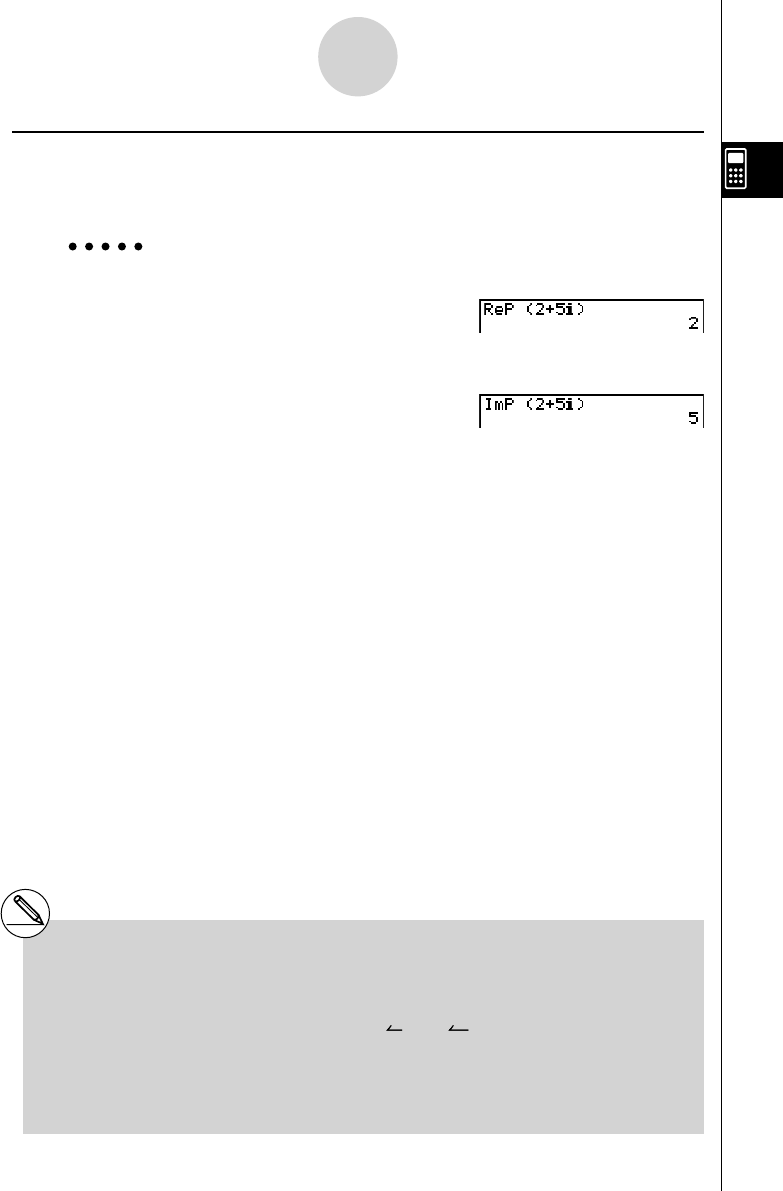User's Manual
Table Of Contents
- Quick-Start
- Precautions when Using this Product
- Contents
- Getting Acquainted— Read This First!
- Chapter 1 Basic Operation
- Chapter 2 Manual Calculations
- Chapter 3 List Function
- Chapter 4 Equation Calculations
- Chapter 5 Graphing
- 5-1 Sample Graphs
- 5-2 Controlling What Appears on a Graph Screen
- 5-3 Drawing a Graph
- 5-4 Storing a Graph in Picture Memory
- 5-5 Drawing Two Graphs on the Same Screen
- 5-6 Manual Graphing
- 5-7 Using Tables
- 5-8 Dynamic Graphing
- 5-9 Graphing a Recursion Formula
- 5-10 Changing the Appearance of a Graph
- 5-11 Function Analysis
- Chapter 6 Statistical Graphs and Calculations
- Chapter 7 Financial Calculation (TVM)
- Chapter 8 Programming
- Chapter 9 Spreadsheet
- Chapter 10 eActivity
- Chapter 11 System Settings Menu
- Chapter 12 Data Communications
- Appendix

20070201
2-6-4
Complex Number Calculations
# The input/output range of complex numbers
is normally 10 digits for the mantissa and two
digits for the exponent.
# When a complex number has more than 21
digits, the real part and imaginary part are
displayed on separate lines.
# When either the real part or imaginary part
of a complex number equals zero, that part is
not displayed in rectangular form.
# The following functions can be used with
complex numbers.
' , x
2
, x
–1
, ^( x
y
),
3
' ,
x
' , In, log, log
a
b, 10
x
, e
x
,
Int, Frac, Rnd, Intg, RndFix(, Fix, Sci, ENG,
ENG, ° ’ ”,
° ’ ”
, a
b
/ c , d / c
k Extraction of Real and Imaginary Parts [OPTN] - [CPLX] - [ReP]/[lmP]
Use the following procedure to extract the real part a and the imaginary part b from a
complex number of the form
a + b i .
Example To extract the real and imaginary parts of the complex number 2 + 5
i
A K 3 (CPLX)6 (g )1 (ReP)
(c+f 6 (g )1 (
i )) w
(Real part extraction)
A K 3 (CPLX)6 (g )2 (ImP)
(c+f 6 (g )1 (
i )) w
(Imaginary part extraction)










